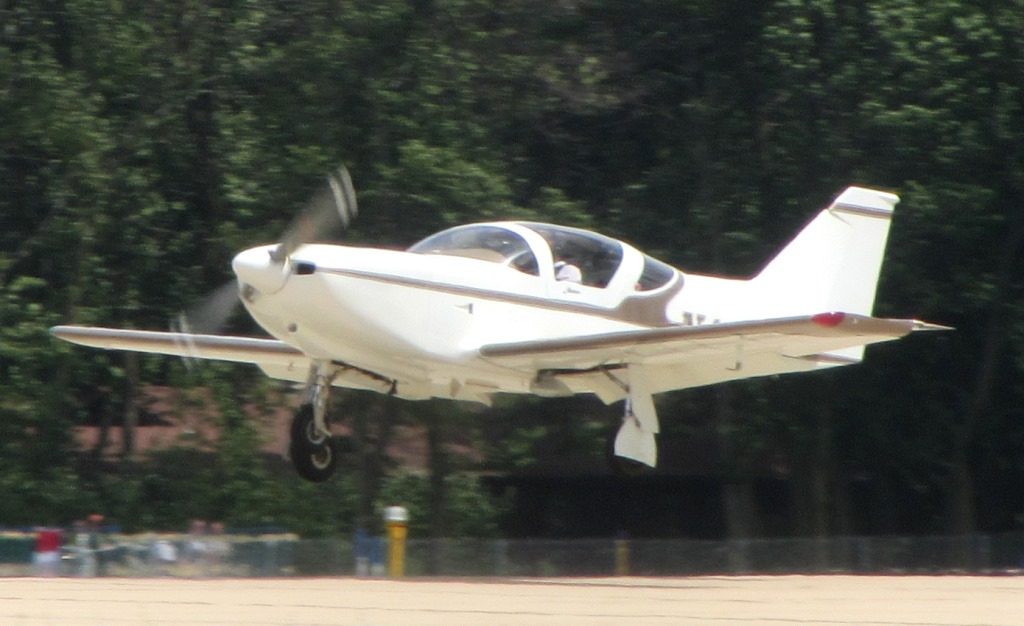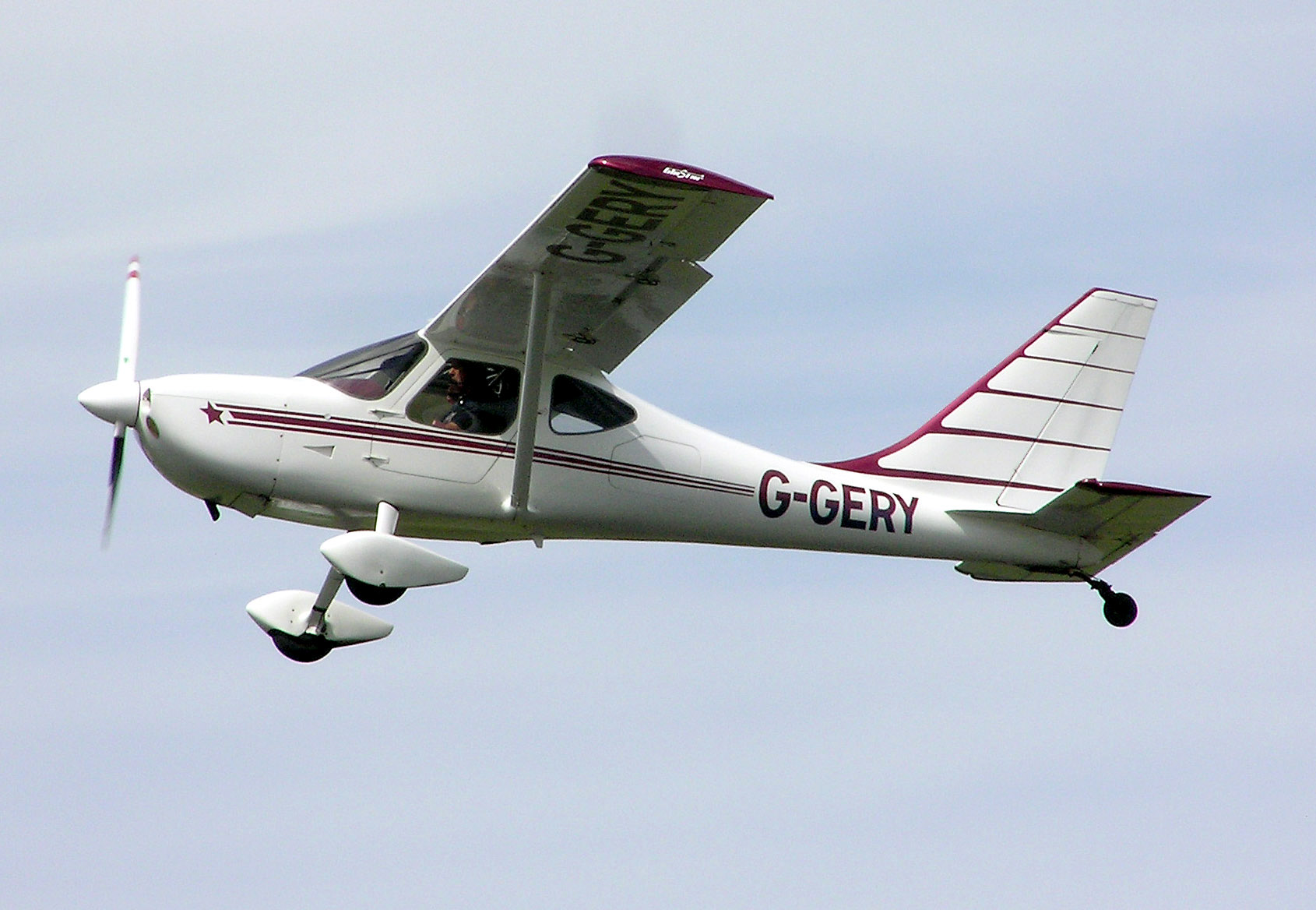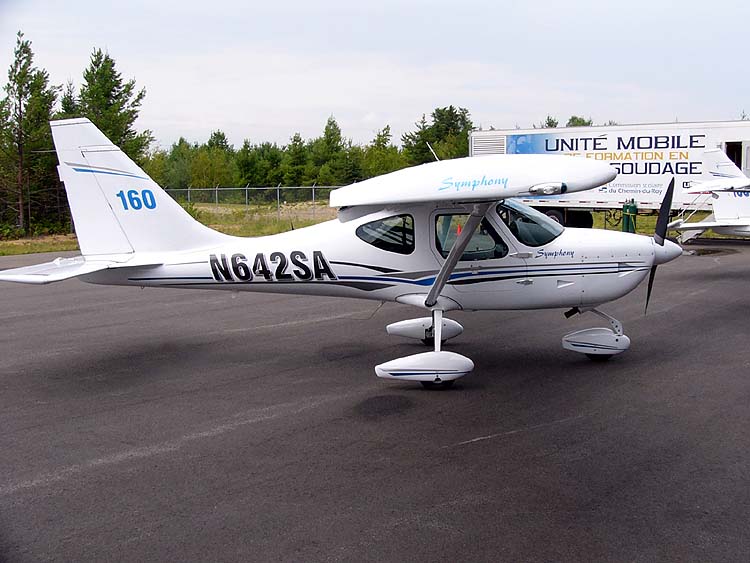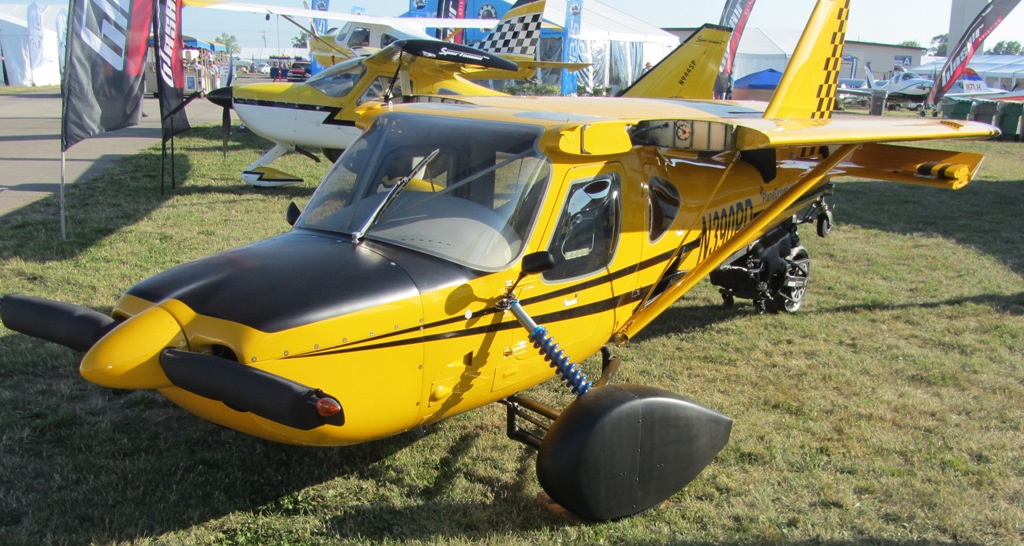|
Glastar
The Glasair GlaStar (sometimes Glastar) is an American amateur-built aircraft that was designed by Tom Hamilton and produced by Stoddard-Hamilton Aircraft and later Glasair Aviation. It was first flown in 1994 and was superseded in production by the Glasair Sportsman 2+2 c. 2005. When it was available the aircraft was supplied as a kit for amateur construction.Bertrand, Noel; Rene Coulon; et al: ''World Directory of Leisure Aviation 2003-04'', page 183. Pagefast Ltd, Lancaster UK, 2003. ISSN 1368-485XDowney, Julia: ''1999 Kit Aircraft Directory'', Kitplanes, Volume 15, Number 12, December 1998, page 68. Primedia Publications. ISSN 0891-1851Purdy, Don: ''AeroCrafter - Homebuilt Aircraft Sourcebook'', page 262. BAI Communications. Design and development The GlaStar features a strut-braced high-wing, a two-seats-in-side-by-side configuration enclosed cockpit accessed via doors, fixed tricycle landing gear or conventional landing gear and a single engine in tractor configuration. ... [...More Info...] [...Related Items...] OR: [Wikipedia] [Google] [Baidu] |
Stoddard-Hamilton Aircraft
Stoddard-Hamilton Aircraft, based in Arlington, Washington, was a designer and supplier of high-performance homebuilt aircraft kits, offering parts and plans to homebuilders. The company's popular ''Glasair'' aircraft series are low wing, two-seat (side by side) fiberglass designs. The Glasair TD of 1979 was the first pre-molded composite aircraft kit on the general aviation market, introduced at the 1980 EAA Oshkosh Airshow. The company was started by Tom Hamilton and named, tongue in cheek, after the style of large aircraft manufacturers in the United States. Using Hamilton's middle and last name, the company was incorporated as Stoddard-Hamilton. Retractable gear and up-engined models were later introduced, with the Glasair III Turbo capable of speeds in excess of , and another model being fitted with a turboprop engine. In the mid-1990s, Glasair introduced the Glastar, a high-wing, short-field capable utility aircraft with two seats. In 2001, Thomas W. Wathen purchased ... [...More Info...] [...Related Items...] OR: [Wikipedia] [Google] [Baidu] |
Glasair Aviation
Glasair Aviation USA, LLC is a Chinese-owned aircraft manufacturer based in Arlington, Washington that produces the Glasair and Sportsman 2+2 line of homebuilt aircraft. More than 3000 Glasair kits have been delivered worldwide. History Tom Hamilton began flight testing the Glasair TD and founded Stoddard-Hamilton Aircraft in 1979. Glasair Aviation was formed in 2001 when Thomas W. Wathen purchased the Glasair assets from bankrupt Stoddard-Hamilton Aircraft, Inc. and signed an agreement with Arlington Aircraft Development, Inc. (AADI) to buy all rights to and assets of the GlaStar model. In July 2012 the company was sold to the Jilin Hanxing Group, which formed a new company Glasair Aircraft USA, LLC. The company indicated that it intended to certify the Glastar design and otherwise retain production in Arlington, Washington. Its chairman said that purchasing Glasair was "the first step in a very long journey" and envisioned the company producing trainers for flight school ... [...More Info...] [...Related Items...] OR: [Wikipedia] [Google] [Baidu] |
Symphony SA-160
The Symphony SA-160 is a CAR 523 certified, two-seat, single-engine, high-wing airplane that was manufactured by Symphony Aircraft Industries in Trois-Rivières, Quebec, Canada in the mid-2000s.Hunt, Adam: ''A brief history of Symphony Aircraft'', COPA Flight December 2005 The SA-160 is a development of the Stoddard-Hamilton Glastar amateur-built kit aircraft and is externally similar to that design.Hunt, Adam: ''Flying the Symphony 160'', COPA Flight December 2005 Development The SA-160 was developed from the Glastar by incorporating many significant changes to the basic design with the aim of simplifying construction and complying with certification requirements. The redesign work was completed by the engineering staff of Ostmecklenburgische Flugzeugbau (OMF Aircraft), (East Mecklenburg Aircraft Works Limited) of Neubrandenburg, Mecklenburg-Vorpommern, Germany between 1998 and 2000. The aircraft produced by OMF were sold under the designation OMF-100-160 Symphony. Later ... [...More Info...] [...Related Items...] OR: [Wikipedia] [Google] [Baidu] |
Plane Driven PD-1
The Plane Driven PD-1 is a modification to the Glasair Sportsman 2+2 to convert it into a practical roadable aircraft. The approach is novel in that it uses a mostly stock aircraft with a modified landing gear "pod" that carries a separate engine for road propulsion. The PD-1's wings fold along its sides, and the main landing gear and road engine pod slide aft along special rails, creating a driving configuration. The driving configuration compensates for the rearward center of gravity created by the folded wings, and provides additional stability for road travel. Development Trey Johnson, an award-winning homebuilt aircraft builder took on the challenge of making a roadable aircraft. The PD-1 is intended to be an aircraft first, and a car second. The vehicle can cruise at a speed of up to 140 mph in normal flight even with the road engine sitting as dead weight. Design The engine pod carries a separate engine for road travel with its own fuel tank. The wheels are dri ... [...More Info...] [...Related Items...] OR: [Wikipedia] [Google] [Baidu] |
Glasair Sportsman 2+2
The Glasair Sportsman 2+2 is a single-engine, high wing, strut-braced, four seat kit aircraft, developed by the Glasair Aviation company.Vandermeullen, Richard: ''2012 Kit Aircraft Buyer's Guide'', Kitplanes, Volume 28, Number 12, December 2011, pages 55-56. Belvoir Publications. ISSN 0891-1851Tacke, Willi; Marino Boric; et al: ''World Directory of Light Aviation 2015-16'', page 109. Flying Pages Europe SARL, 2015. Design and development The Sportsman 2+2 was developed from the company's Glastar aircraft, a smaller version. The company's 'Two weeks to taxi' program provides factory-assisted assembly, while providing the owner with training in using tools and jigs. This complies with the Federal Aviation Administration's 51% construction rule, allowing issuance of a Special Certificate of Airworthiness as an amateur-built aircraft. The aircraft can be fitted with tricycle landing gear or conventional landing gear and can also be equipped with floats and amphibious floats or ... [...More Info...] [...Related Items...] OR: [Wikipedia] [Google] [Baidu] |
WikiProject Aircraft
A WikiProject, or Wikiproject, is a Wikimedia movement affinity group for contributors with shared goals. WikiProjects are prevalent within the largest wiki, Wikipedia, and exist to varying degrees within sister projects such as Wiktionary, Wikiquote, Wikidata, and Wikisource. They also exist in different languages, and translation of articles is a form of their collaboration. During the COVID-19 pandemic, CBS News noted the role of Wikipedia's WikiProject Medicine in maintaining the accuracy of articles related to the disease. Another WikiProject that has drawn attention is WikiProject Women Scientists, which was profiled by '' Smithsonian'' for its efforts to improve coverage of women scientists which the profile noted had "helped increase the number of female scientists on Wikipedia from around 1,600 to over 5,000". On Wikipedia Some Wikipedia WikiProjects are substantial enough to engage in cooperative activities with outside organizations relevant to the field at issue. For e ... [...More Info...] [...Related Items...] OR: [Wikipedia] [Google] [Baidu] |
Lycoming O-320
The Lycoming O-320 is a large family of naturally aspirated, air-cooled, four-cylinder, direct-drive engines produced by Lycoming Engines. They are commonly used on light aircraft such as the Cessna 172 and Piper Cherokee. Different variants are rated for 150 or 160 horsepower (112 or 119 kilowatts). As implied by the engine's name, its cylinders are arranged in horizontally opposed configuration and a displacement of 320 cubic inches (5.24 L). Design and development The O-320 family of engines includes the carbureted O-320, the fuel-injected IO-320, the inverted mount, fuel-injected AIO-320 and the aerobatic, fuel-injected AEIO-320 series. The LIO-320 is a "left-handed" version with the crankshaft rotating in the opposite direction for use on twin-engined aircraft to eliminate the critical engine. The first O-320 (with no suffix) was FAA certified on 28 July 1953 to CAR 13 effective 5 March 1952; this same engine was later re-designated, without change, as the O-320-A1 ... [...More Info...] [...Related Items...] OR: [Wikipedia] [Google] [Baidu] |
Airfoil
An airfoil (American English) or aerofoil (British English) is the cross-sectional shape of an object whose motion through a gas is capable of generating significant lift, such as a wing, a sail, or the blades of propeller, rotor, or turbine. A solid body moving through a fluid produces an aerodynamic force. The component of this force perpendicular to the relative freestream velocity is called lift. The component parallel to the relative freestream velocity is called drag. An airfoil is a streamlined shape that is capable of generating significantly more lift than drag. Airfoils can be designed for use at different speeds by modifying their geometry: those for subsonic flight generally have a rounded leading edge, while those designed for supersonic flight tend to be slimmer with a sharp leading edge. All have a sharp trailing edge. Foils of similar function designed with water as the working fluid are called hydrofoils. The lift on an airfoil is primarily the result o ... [...More Info...] [...Related Items...] OR: [Wikipedia] [Google] [Baidu] |
Wing Tip
A wing tip (or wingtip) is the part of the wing that is most distant from the fuselage of a fixed-wing aircraft. Because the wing tip shape influences the size and drag of the wingtip vortices, tip design has produced a diversity of shapes, including: * Squared-off * Aluminium tube bow * Rounded * Hoerner style * Winglets * Drooped tips * Raked wingtips * Tip tanks * Sails * Fences * End plates Winglets have become popular additions to high speed aircraft to increase fuel efficiency by reducing drag from wingtip vortices. In lower speed aircraft, the effect of the wingtip shape is less apparent, with only a marginal performance difference between round, square, and Hoerner style tips The slowest speed aircraft, STOL aircraft, may use wingtips to shape airflow for controllability at low airspeeds. Wing tips are also an expression of aircraft design style, so their shape may be influenced by marketing considerations as well as by aerodynamic requirements. Wing tips are ... [...More Info...] [...Related Items...] OR: [Wikipedia] [Google] [Baidu] |
Flap (aircraft)
A flap is a high-lift device used to reduce the stalling speed of an aircraft wing at a given weight. Flaps are usually mounted on the wing trailing edges of a fixed-wing aircraft. Flaps are used to reduce the take-off distance and the landing distance. Flaps also cause an increase in drag so they are retracted when not needed. The flaps installed on most aircraft are partial-span flaps; spanwise from near the wing root to the inboard end of the ailerons. When partial-span flaps are extended they alter the spanwise lift distribution on the wing by causing the inboard half of the wing to supply an increased proportion of the lift, and the outboard half to supply a reduced proportion of the lift. Reducing the proportion of the lift supplied by the outboard half of the wing is accompanied by a reduction in the angle of attack on the outboard half. This is beneficial because it increases the margin above the stall of the outboard half, maintaining aileron effectiveness and reduci ... [...More Info...] [...Related Items...] OR: [Wikipedia] [Google] [Baidu] |
Rotax 912ULS
The Rotax 912 is a horizontally-opposed four-cylinder, naturally aspirated, four-stroke aircraft engine with a reduction gearbox. It features liquid-cooled cylinder heads and air-cooled cylinders. Originally equipped with carburetors, later versions are fuel injected. Dominating the market for small aircraft and kitplanes, Rotax produced its 50,000th 912-series engine in 2014. Originally available only for light sport aircraft, ultralight aircraft, autogyros and drones, the 912-series engine was approved for certified aircraft in 1995. Design and development The Rotax 912 was first sold in 1989 in non- certificated form for use in ultralights and motorgliders. The original 912 UL engine has a capacity of and a compression ratio of 9.1:1. The engine differs from previous generation aircraft engines (such as the Lycoming O-235) in that it has air-cooled cylinders with liquid-cooled heads and uses a 2.43:1 PSRU reduction gearbox to reduce the engine's relatively high 5 ... [...More Info...] [...Related Items...] OR: [Wikipedia] [Google] [Baidu] |









